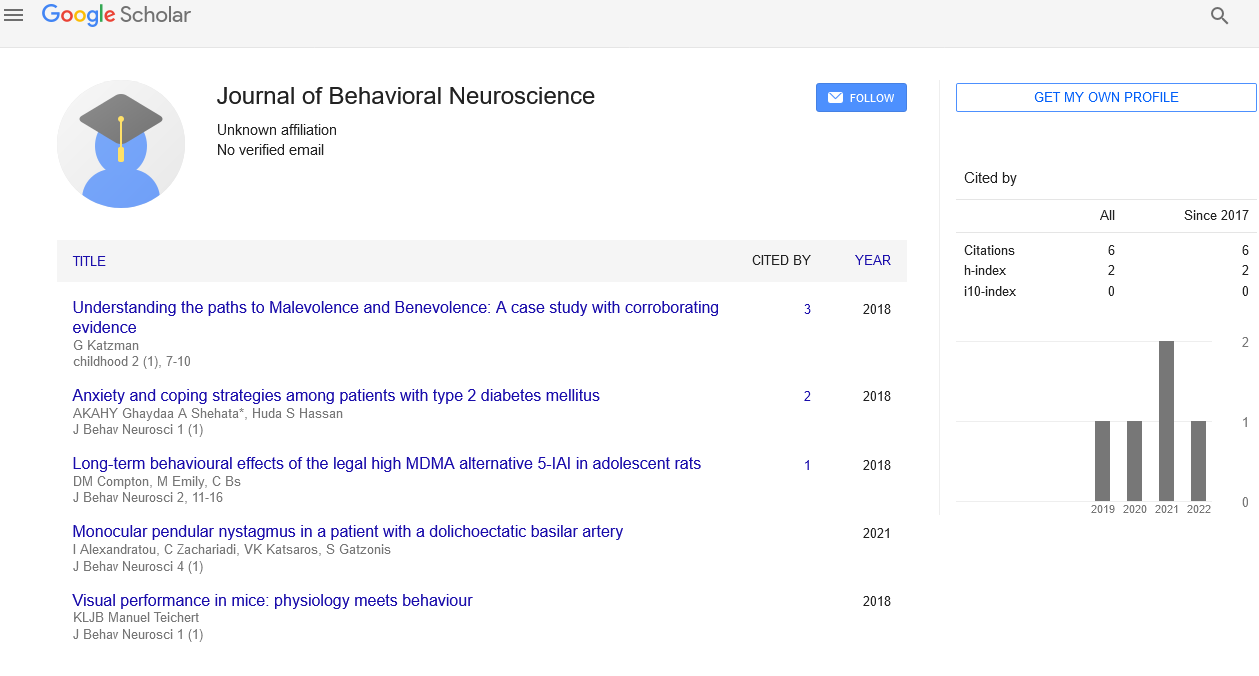Behavioural neuroscience: an overview
Received: 05-Jan-2021 Accepted Date: Jan 15, 2021; Published: 25-Jan-2021
Citation: Tiwari S. Behavioural neuroscience: An overview. J Behav Neurosci Res.2021;4(1):3.
This open-access article is distributed under the terms of the Creative Commons Attribution Non-Commercial License (CC BY-NC) (http://creativecommons.org/licenses/by-nc/4.0/), which permits reuse, distribution and reproduction of the article, provided that the original work is properly cited and the reuse is restricted to noncommercial purposes. For commercial reuse, contact reprints@pulsus.com
Editorial Note
The science of adaptive behaviour is known as behaviour analysis. It is not dualistic since it focuses on behaviour as a subject matter in and of itself, rather than as an index of cognitive activities. Researchers found various rules of learning using single-subject experimental designs, and behaviour analysis includes them. The science of adaptive behaviour is known as behaviour analysis. It is not dualistic since it focuses on behaviour as a subject matter in and of itself, rather than as an index of cognitive activities. Several laws of learning uncovered by researchers employing single-subject experimental methods are included into behaviour analysis. I contend that behaviour analysis can offer neuroscientists with a theoretical and experimental framework within which to work. It will look at the neurological underpinnings of a variety of behaviours, including those that are typically defined in cognitive terms. Behaviour’s importance in Neuroscience anything an organism does, whether or not it is noticed, is considered behaviour. The importance of behaviour in biopsychology should be recognised, as behaviour is a critical evolutionary predictor of survival. What matters is what creatures do, such as finding refuge, avoiding predation, mating, and caring for young. As a result, the nervous system has adapted to meet the challenges of interacting with and adjusting to the environment. The nervous system has developed to perform two duties connected to an organism’s ability to interact with its environment sensing energy changes and controlling movement, with sensory and motor parts of the cortex dedicated to each of these processes. Other cortical areas, on the other hand, are substantially programmed by learning experiences. The most activity in the neonate’s brain occurs in the primary sensory and motor cortex, thalamus, and brainstem, areas associated with the primitive reflexes seen in infants, according to research using Positron Emission Tomography (PET) scans that compares brain activity in new-borns to that in older children and adults. The frontal association cortex and other areas linked to higher cortical and cognitive function have almost little activity. More activity is detected in areas of the cortex that mediate these behaviours when new-borns engage with their environments. Such research backs up the idea that learning is to blame for the brain alterations associated with complicated behaviour and emphasises the role of behavioural plasticity. The interplay between an organism’s behaviour and its environment causes changes in the structure of the brain, which is the physical basis of behavioural plasticity. Furthermore, evidence demonstrates that operant training therapies can cause different alterations in the human brain. Neuroscientists need to understand the roles of adaptive behaviours in order to properly examine how the nervous system mediates them. It will only be feasible to build rational models of behavioural causation, if behaviour analysis and behavioural neuroscience interactions are explored both behaviourally and physiologically in a broad biological context.





